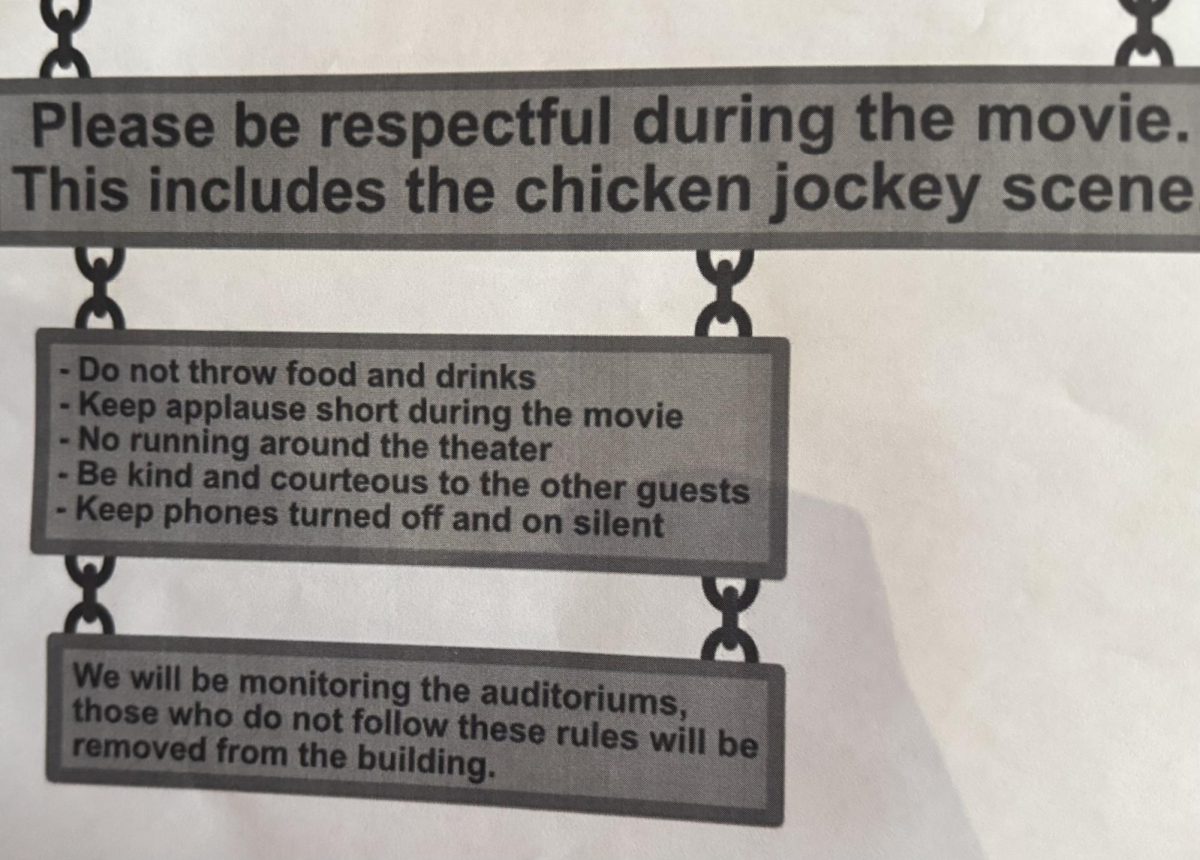Option A: “Let’s go around and say your name, your year, your major and where you’re from.”
Option B: “Let’s go around and say your name, your pronouns, your year, your major and where you’re from.”
These are the two options a leader has when directing a group introduction. What’s the difference? Option B is inclusive to students of all genders, discourages assumption-making, makes sure there’s no uncomfortable misgendering later, and shows that pronoun choice is just as deliberate for a cisgender female using she/her/hers as for a trans person using ze/zir/zirs.
Option A leaves students whose pronouns can’t be correctly assumed with two (often uncomfortable) options:
Option A1: Say their pronouns after their name, singling them out as The One With Different Pronouns.
Option A2: Say only their name like everyone else and have to correct someone later after being all-but-inevitably misgendered.
No matter where I go, the protest I always hear in objection to doing pronouns is “it’s too big of a question to ask during a quick go-around.”
No. It’s not. The only people who think it’s a big deal to share pronouns are the people who “don’t need to do it.”
Think of it this way: We all have names we go by. Sometimes they’re what’s on our passport, sometimes they’re a variation, sometimes they’re a different name altogether. You might be the seventh Devaughn in your family, you might be named Sumathy after a beloved great-aunt, you might go by a your middle name, Katalyna, to avoid confusion because you share a first name with your mother. But when you introduce yourself, everyone just needs to know your name—what to call you. Pronouns are the same way. While pronouns can carry connotations or stories with them, they’re really just, at the end of the day, what a person wants to be called.
Likewise, here’s a conversation you would never have with a stranger.
Person 1: “Hey Sam!”
Person 2: “Uh, my name’s not Sam—it’s Cedric.”
Person 1: “Yeah, but you look like a Sam, so I’m just gonna call you Sam.”
We don’t assume names by looking at people, so why should we assume pronouns?
The other protest I’ve heard, especially in my work with kids, is “it’s too complex of a topic.” Again, it’s not. The past two summers, I’ve taught at a program with 13- and 14-year olds, one-third of whom were not from the United States; and, for about as many students, English was not their first language. The first day of class, I asked the students to share their name, pronouns, and other information relevant to the activity we were doing. “Tell us what you want to be called: your name, and what pronouns you want us to use for you, because just like we don’t assume names, we don’t assume pronouns. So for me, I’m Max, and I use ze/zir/zirs or they/them/theirs, and I’m your instructor.”
The only issue I ever had were some kids who didn’t know what a pronoun actually was. Ten seconds later—”Oh! I am Jianquan and he, his…him, right?”
And then we moved on. And even though none of them introduced themselves with pronouns that couldn’t have been assumed, it did no harm whatsoever. And the next morning Jianquan’s RA told me he asked his hall to share their pronouns that evening. And one kid said “they/them/theirs.”
Until that point, everyone had been using the wrong pronouns for them.
Remember, these kids were 13.
My point: there is absolutely no reason not to make pronouns a part of any introductions at Mac, whether in class, at an org meeting, or in any other “go around and say your name”-type setting. It takes two extra seconds and can only do good things.







kredi • Sep 3, 2019 at 3:53 pm
Borsa, ekonomi ve kredi alanında bilgiler sunan sitemiz, hisse senetleri hakkında uzman analizlere yer verirken kredi ihtiyacı olan kişilere bankacılık alanında bilgiler sunmaktadır. Yatırım yapmak isteyen girişimcilere yön gösterecek analizler sunan sitemiz ile finansal hayatınızı yönlendirebilir, finansal piyasalar hakkında bilgi sahibi olabilirsiniz.
real followers instafollowers.co • Sep 3, 2019 at 1:10 am
Buy instagram real followers and likes.
Cafe bar sandalyeleri • Sep 2, 2019 at 8:50 am
https://www.unvermobilya.com.tr/
instagram fotoğraf indirme • Sep 2, 2019 at 8:10 am
https://eksisozluk.com/entry/94647974
cialis fiyatları • Aug 31, 2019 at 5:10 pm
Cialis fiyatı da en az Cialis nedir sorusu kadar merak edilir. Cialis fiyatı, birçok parametreye göre değişiklik gösterir. Örneğin Cialis’in satışa sunulduğu ülkedeki mevcut piyasa durumu, Cialis stok durumu, tercih edilecek Cialis çeşidi ve dozu fiyat üzerinde önemli bir etkendir.
Samsun Karot Firmaları • Aug 29, 2019 at 6:24 am
Genç dinamik ve profesyonel kadromuz ile müşteri odaklı çalışıyoruz.
Samsun Beton Delme • Aug 29, 2019 at 6:09 am
Genç dinamik ve profesyonel kadromuz ile müşteri odaklı çalışıyoruz.
Bursa Beton Delme • Aug 28, 2019 at 4:33 pm
Çevremize ve insanlara olan saygıdan ödün vermeden; ülkemizde kaliteli ve güvenli yapılar oluşmasında katkıda bulunmak ve işimizde lider Marka olmak için yılmadan çalışmaktır.
Sikiş başladı instagram takipçi satın al • Aug 28, 2019 at 6:00 am
https://www.uzmantakipci.com/instagram-takipci-satin-al.html
cappadocia balloon flight • Aug 22, 2019 at 2:49 pm
Hot Air Balloon Tour Cappadocia
Blue Screen • Aug 21, 2019 at 4:43 pm
https://www.maviekran.net/vikipedi-giris-yollari/
who unfollowed me on instagram • Aug 20, 2019 at 7:41 am
When Instagram added the feature of video-sharing to its inventory, everything changed about online marketing and every passing day,
who unfollowed me on instagram • Aug 20, 2019 at 5:18 am
Seeing your following numbers dropping and not being able to do something can be mentally exhausting.
instagram video downloader • Aug 20, 2019 at 2:18 am
https://www.glowinsta.com/instagram-video-downloader
download instagram photos • Aug 19, 2019 at 11:58 am
GlowInsta is proud to present to you our newest and one of the most useful tools, Download Instagram Photos.
free instagram followers • Aug 19, 2019 at 10:41 am
https://www.glowinsta.com/free-instagram-followers
buy real Instagram followers • Aug 17, 2019 at 6:06 am
If you want to be a successful social media influencer, it will be essential for you to buy Instagram followers with Instant Delivery and so forth. As SociFan.com we are more than happy to proclaim that you can get all the social growth tools for your account from us. Therefore, we suggest that you read and understand our guide altogether to avoid any future confusion you might have to endure.
buy followers • Aug 17, 2019 at 5:54 am
If you want to be a successful social media influencer, it will be essential for you to buy Instagram followers with Instant Delivery and so forth. As SociFan.com we are more than happy to proclaim that you can get all the social growth tools for your account from us. Therefore, we suggest that you read and understand our guide altogether to avoid any future confusion you might have to endure.
buy instagram followers • Aug 17, 2019 at 5:44 am
If you want to be a successful social media influencer, it will be essential for you to buy Instagram followers with Instant Delivery and so forth. As SociFan.com we are more than happy to proclaim that you can get all the social growth tools for your account from us. Therefore, we suggest that you read and understand our guide altogether to avoid any future confusion you might have to endure.
buy instagram comments • Aug 16, 2019 at 9:53 am
Well, what if you are not getting any engagement in the first place? There are a lot of brands and businesses struggling on Instagram to receive more engagement.
buy instagram auto likes • Aug 16, 2019 at 8:26 am
Let’s think that you are planning to buy likes for IG. Well, why not buy auto likes for Instagram in the first place?
buy instagram likes • Aug 16, 2019 at 7:04 am
s we always mention, taking action to buy Instagram likes is one of the best ways to grow your following base authentically.
buy instagram followers • Aug 16, 2019 at 5:38 am
Before you Buy Instagram Followers, you should note that the package you prefer is essential. GlowInsta offers you quality service and quality followers at affordable prices, at the same time.
crovu • Aug 16, 2019 at 2:43 am
crovu hakkında instagram
GlowInsta • Aug 15, 2019 at 11:10 am
irst of all, we love what we do. We offer the cheapest prices and we provide more ways of increasing your engagements.
Free Instagram Views • Aug 15, 2019 at 7:05 am
https://buyinstagramfollowers.org/free-instagram-views
instagramdeposu • Aug 15, 2019 at 4:47 am
https://instagramdeposu.com/
who unfollowed me on instagram • Aug 15, 2019 at 3:04 am
https://buyinstagramfollowers.org/who-unfollowed-me
BotLike • Aug 12, 2019 at 7:05 pm
Photo Liker, Photo Auto Liker, Working Auto Liker, Auto Liker, Autoliker, autoliker, autolike, Autolike, ZFN Liker, Status Auto Liker, Status Liker, auto liker, auto like, Autolike International, Autoliker, Increase Likes, Auto Like
free tiktok fans • Aug 9, 2019 at 6:35 pm
https://buyinstagramfollowers.org/free-tiktok-fans
Instagram video indir • Aug 9, 2019 at 1:22 pm
Instagram Video İndir hizmetimiz ile takipci.shop sitemiz üzerinden ücretsiz, online ve programsız olarak tek tıkla sizde videolarınızı görüntüleyebilirsiniz!
instagram fotoğraf indirme • Aug 9, 2019 at 1:07 pm
Instagram Fotoğraf İndirme aracı ile kullanıcı adını yazarak Fotoğraflarınızı tek tıkla toplu pc veya telefonunuza Ücretsiz ve Programsız indir.
free youtube comments • Aug 9, 2019 at 11:59 am
https://buyinstagramfollowers.org/free-youtube-comments
free youtube dislikes • Aug 9, 2019 at 9:27 am
https://buyinstagramfollowers.org/free-youtube-dislikes
buy Instagram comments • Aug 9, 2019 at 7:55 am
https://www.buyinstagramcomments.org/
free facebook followers • Aug 9, 2019 at 2:30 am
https://buyinstagramfollowers.org/free-facebook-followers
free facebook likes • Aug 8, 2019 at 11:22 am
https://buyinstagramfollowers.org/free-facebook-photo-likes
free twitter retweets • Aug 8, 2019 at 9:31 am
https://buyinstagramfollowers.org/free-twitter-retweets
free twitter likes • Aug 8, 2019 at 8:00 am
https://buyinstagramfollowers.org/get-twitter-likes-free
free instagram comments • Aug 8, 2019 at 2:18 am
https://buyinstagramfollowers.org/free-instagram-comments
free youtube views • Aug 7, 2019 at 11:14 am
https://buyinstagramfollowers.org/free-youtube-views
free soundcloud reposts • Aug 7, 2019 at 9:02 am
https://buyinstagramfollowers.org/free-soundcloud-reposts
buy instagram likes • Aug 7, 2019 at 5:18 am
https://buyinstagramfollowers.org/buy-instagram-likes
buy automatic instagram likes • Aug 7, 2019 at 3:48 am
https://buyinstagramfollowers.org/buy-automatic-instagram-likes
buy instagram comments • Aug 7, 2019 at 2:09 am
https://buyinstagramfollowers.org/buy-instagram-comments
buy facebook likes • Aug 6, 2019 at 11:38 am
https://buyinstagramfollowers.org/buy-facebook-likes
buy facebook views • Aug 6, 2019 at 10:04 am
https://buyinstagramfollowers.org/buy-facebook-views
buy twitter followers • Aug 6, 2019 at 8:18 am
https://buyinstagramfollowers.org/buy-twitter-followers
buy twitter retweets • Aug 6, 2019 at 6:33 am
https://buyinstagramfollowers.org/free-twitter-retweets
buy twitter likes • Aug 6, 2019 at 4:16 am
https://buyinstagramfollowers.org/buy-twitter-likes
buy igtv views • Aug 6, 2019 at 2:11 am
https://buyinstagramfollowers.org/buy-igtv-views
buy igtv likes • Aug 5, 2019 at 11:14 am
https://buyinstagramfollowers.org/buy-instagram-igtv-likes
buy igtv comments • Aug 5, 2019 at 9:16 am
https://buyinstagramfollowers.org/buy-igtv-comments
buy youtube subscribers • Aug 5, 2019 at 6:24 am
https://buyinstagramfollowers.org/buy-youtube-subscribers
buy youtube views • Aug 5, 2019 at 4:55 am
https://buyinstagramfollowers.org/buy-youtube-views
buy youtube likes • Aug 5, 2019 at 2:46 am
https://buyinstagramfollowers.org/buy-youtube-likes
lr katalog • Aug 4, 2019 at 2:04 am
LR katalog fiyatlarını inceleyin ve LR kataloğundan seçtiğiniz ürünlerle indirimli sipariş verin.
lr katalog • Aug 4, 2019 at 1:54 am
LR katalog fiyatlarını inceleyin ve LR kataloğundan seçtiğiniz ürünlerle indirimli sipariş verin.
lr • Aug 4, 2019 at 1:38 am
LR Aloe Vera, Zeitgard, Microsilver gibi LR ürünlerini LR Türkiye güvencesiyle ve LR üyelik fırsatıyla, en uygun fiyatlarla sipariş verin
buy youtube comments • Aug 2, 2019 at 11:17 am
https://buyinstagramfollowers.org/buy-youtube-comments
buy Instagram views • Aug 2, 2019 at 7:50 am
https://buyinstagramfollowers.org/buy-instagram-views
https://www.babilegitim.com/ • Aug 1, 2019 at 10:51 am
https://www.babilegitim.com/
buy Instagram followers • Jul 31, 2019 at 12:41 pm
https://buyinstagramfollowers.org/
diyabet cerrahisi • Jul 29, 2019 at 5:39 am
http://www.profdreminersoy.com/
çevrimsiz bonus veren siteler • Jul 27, 2019 at 12:44 pm
Arkadaşlar bedava bonus veren siteler hakkında bilgi almak ve konuları takip etmek istiyorsanız bahis forum sitesini inceleyiniz üye olan herkese 50 tl bedava çevrimsiz deneme bonusu. Güvenilir bahis siteleri, deneme bonusu, çevrimsiz deneme bonusu veren siteler,bedava deneme bonusu veren siteler,bahis tahminleri, kombine kuponları,kasa katlama kuponları bu forumda paylaşılmaktadır.
viagra fiyatı • Jul 27, 2019 at 12:03 am
Erektil disfonksiyona bağlı olarak sertleşme ve erken boşalma problemleri yaşayan erkeklerin birçoğu Viagra kullanır. Çünkü Viagra güvenilir ve etkili bir ilaçtır. Ayrıca Viagra fiyatları da birçok kişinin bütçesini yormayacak bir değer aralığına sahiptir.
instagram takipçi satın al • Jul 26, 2019 at 5:47 am
https://www.takip2018.com/
japon bristol • Jul 25, 2019 at 2:43 pm
Fantazi kağıt üretimi ve dağıtımı uzmanlık alanımız. Binlerce çeşit fantezi kağıt için kataloglarımızı talep edebilirsiniz. 120gr’dan 450gr’a kadar onlarca değişik renkte desenli fantazi kağıt üretiyoruz. Standart ebat 70x100cm’dir. Tuale, Zenit, Laid Desen, Deri Desen, Buckram Desen, Baklava desen… Sedefli kağıt, floresan kağıt, siyah kağıt, plike kağıt çeşitleri Anıl Kağıt’ta
https://www.instagramsorunlari.net/instatakipci-com-ile-sosyal-medyada-populer-olma-zamani/ • Jul 24, 2019 at 4:51 am
https://www.instagramsorunlari.net/instatakipci-com-ile-sosyal-medyada-populer-olma-zamani/
http://www.kibrisda.com/showpost.php?p=1294&postcount=1 • Jul 24, 2019 at 4:09 am
http://www.kibrisda.com/showpost.php?p=1294&postcount=1
https://www.techdirt.com/articles/20190312/11132541783/un-human-rights-expert-warns-eu-not-to-pass-article-13.shtml • Jul 24, 2019 at 3:56 am
https://www.techdirt.com/articles/20190312/11132541783/un-human-rights-expert-warns-eu-not-to-pass-article-13.shtml
ankara nakliyat • Jul 22, 2019 at 3:35 pm
Ankara Evden Eve Nakliyat sektöründe uzun yıllardır kaliteli hizmet sunan Ankara Nakliyat, uzun süredir çalıştığı Nakliyat sektöründe kazandığı tecrübe ve deneyimini müşteri memnuniyeti odaklı tutarak önemli bir büyüme gerçekleştirmiştir. Gerek çalışan personelin eğitimi ve yeterliliği, gerekse araçlarında son gelişme ve teknolojiyi takip ederek sağladığı üst düzey taşıma koşulları Ankara Nakliyat firmasını bölgenin en çok tercih edilen ev taşıma firmalarından biri haline getirmiştir.
pop şarkı • Jul 22, 2019 at 2:23 pm
Son zamanlarda müzik piyasasını sallayan sanatçılardan olan,kendinden söz ettiren ve hit şarkı arasına hızlı bir şekilde giren Derya Uluğ ah zaman pop şarkı çok kısa bir sürede en iyi şarkı kategorisini yükseldi.
Çeşme Sakız Adası Feribot Bileti • Jul 21, 2019 at 2:51 am
Çeşme Sakız Adası Feribot Bileti
konaklamalı sakız adası turu • Jul 21, 2019 at 2:46 am
Konaklamalı Sakız Adası Turu
sakız adası tur paketleri • Jul 21, 2019 at 2:42 am
Sakız Adası Tur Paketleri günübirlik ve konaklamalı turlarımızdan oluşmaktadır. Sizlere rehberli turlarımızı sunduğumuz gibi , eğer isterseniz sadece Sakız Adası Bileti ve Otel konaklama içeren paketlerimizi de sunuyoruz.
bedava bonus veren siteler • Jul 19, 2019 at 3:51 pm
Bonus Hane-Bahis Forum, Bahis siteleri, Çevrimsiz Deneme Bonusu
Ankara Çıkışlı Turlar • Jul 18, 2019 at 3:02 am
https://www.diyetur.com/ankara-cikisli-turlar
cialis satış • Jul 15, 2019 at 4:06 am
Sertleşme sorunu, dünya üzerinde yer alan hemen hemen 150 milyon erkeği etkiyor. Birçok nedenden ötürü ortaya çıkabilen bu soruna rastlanma oranı, yaş aralığı arttıkça daha da artıyor.
istanbul temizlik şirketi • Jul 15, 2019 at 3:48 am
Yeşil temizlik şirketleri; ofis temizliği, inşaat sonrası temizlik, dış cephe cam temizliği, apartman temizliği konusunda İstanbul genelinde en profesyonel temizlik hizmeti sunmaktadır. Güçlü referanslar ve kurumsal yaklaşımlar ile çözüm ortağınız olmaya hazırız.
bursa günlük kiralık daire • Jul 14, 2019 at 5:58 pm
günlük kiralık ev sistemi sayesinde dar ve sıkıcı otel odalarından kurtulabilir dileğiniz kadar keyifli ve güvenli vakit geçirebilir, istediğiniz gibi dışarıdan çeşitli siparişlerinizi verebilirsiniz.